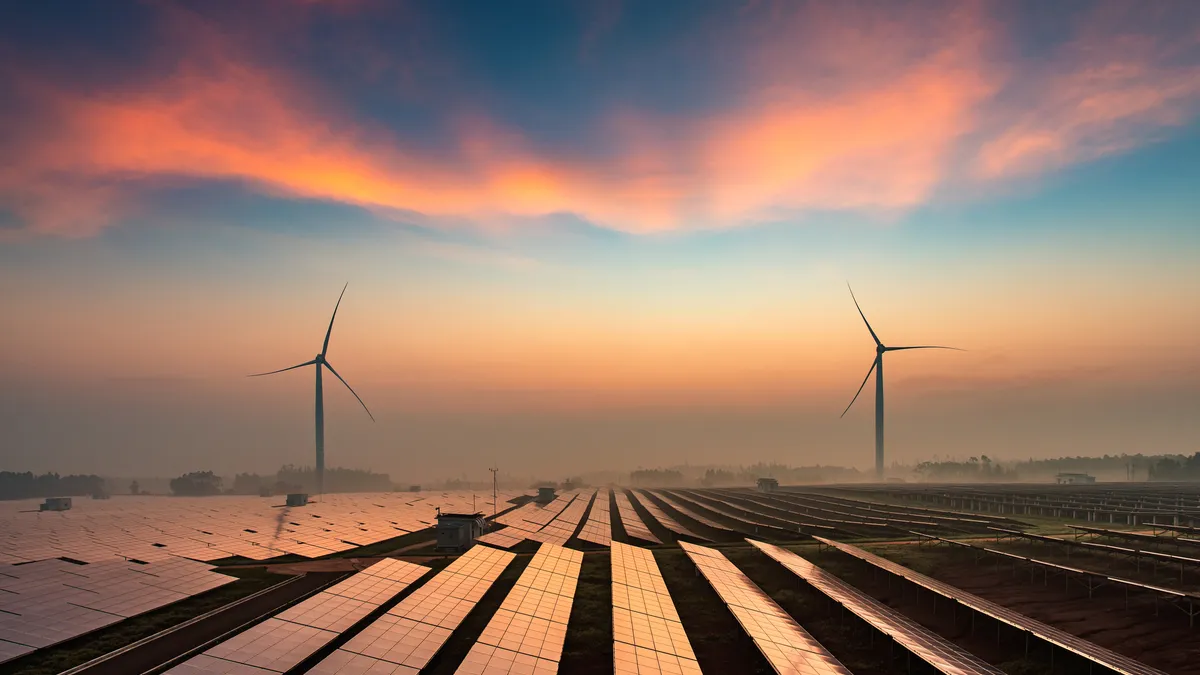Dive Brief:
- If cities are to hit their targets of using 100% renewable energy, they need to build more expertise, invest more money into those goals and garner more support from utilities, according to a report from the Institute for Local Self-Reliance (ILSR), the University of Michigan’s School for Environment and Sustainability and other partners.
- Cities should also focus on equity and make sure the most vulnerable are not neglected in the transition away from fossil fuels, the report said. The best way to do that is to build community buy-in early on, from a wide swath of residents and community organizations, report co-author Kanchan Swaroop told Smart Cities Dive.
- Some of these barriers are not easy to overcome, the report notes. Resources are constrained and it can be difficult for staffers and residents to gain expertise. Additionally, with many cities not controlling their utility companies, it can be tricky to influence reduced emissions among utilities.
Dive Insight:
The report says greenhouse gas emissions are "rising at an unprecedented rate," and with the federal government largely taking a back-seat in the fight against climate change, it is up to state and city governments to do much of the heavy lifting.
John Farrell, co-director of ILSR and director of its Energy Democracy Initiative, told Smart Cities Dive it can be challenging for cities to put much financial heft behind hitting climate goals as they are often limited in taxing power and cannot offer as robust incentive programs as the federal government can.
And building that public support is crucial, especially in the early stages of putting together a climate agenda that looks to make enormous changes to a city's energy consumption. Swaroop said that while many cities’ intentions are good, they need to be more cognizant of involving their residents and collecting public input.
"A lot of the commitments were started by mayors or city councils, and so a lot of it wasn't really a public commitment," she said. "We found that the cities that had this public backing and public support of the commitment ended up doing better. It helped in their progress to have the public be informed and aware of what was happening, but also be included in the actual decision-making process."
The rise of climate emergency declarations at the city level, which are often pushed by local activists in a bid to focus leaders’ minds and policy agendas, are an example of how community engagement can help drive change. But this can be challenging without collaboration with the local utility — and with many utilities answerable to shareholders, it can be tough for cities to build a relationship with them, Farrell said.
To get them on board as a partner in citywide decarbonization efforts, Swaroop said public pressure can be key as it can encourage utilities to change their habits. Efforts at the state level to introduce renewable energy portfolio requirements can also be helpful, she said, while policies like that of Berkeley, CA to ban natural gas from new buildings can help focus minds.
"It is very important to make sure that the utility has some sort of incentive to go towards renewable energy, whether that is public pressure or branding or just regulatory standards that they have to abide by," Swaroop said.
It is still early in the transition to 100% renewable energy, and Swaroop said it will be key for cities to collaborate and share best practices, as well as continue to engage the public on how they will reach their goals.
"No city's transition will look the same," she said. "They're all done in different ways because it depends on what kind of support you have within the local government and in the public. But I think we can all learn from each other, so it's important to understand similar cities near you, it's really important to collaborate in this process, whether that's within the city or outside of it."












